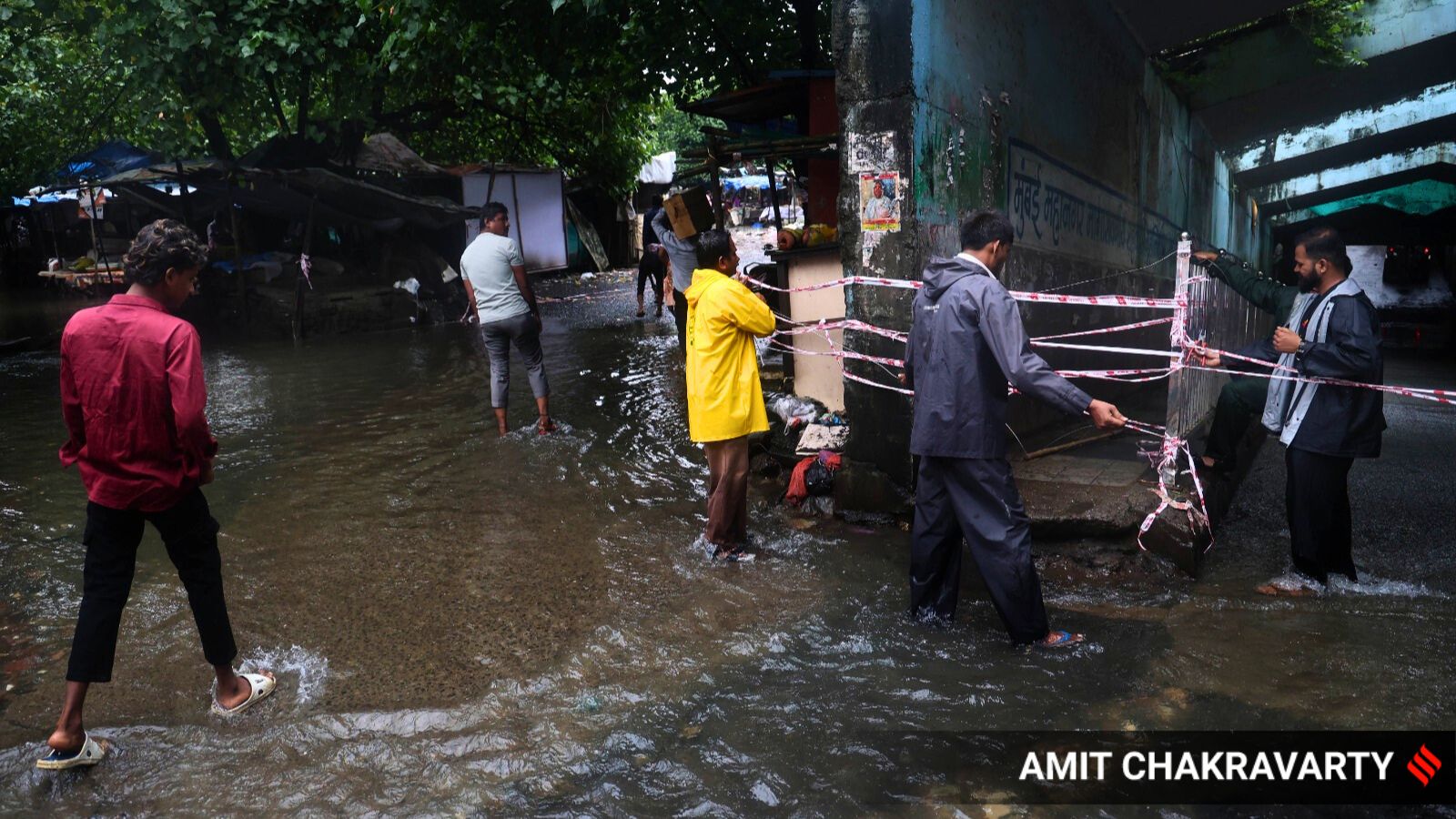 |
|
Mumbai, a city accustomed to the rhythm of the monsoon, has experienced a dramatic shift in its rainfall patterns this year. The article highlights how a concentrated period of intense rainfall over just five days has propelled the city to reach its average seasonal rainfall, despite a significant portion of the monsoon season still remaining. This situation underscores the variability and unpredictability of weather patterns, especially in the context of climate change. The fact that the Santacruz weather station has recorded nearly the average seasonal rainfall despite almost 40 days of the season remaining, speaks volumes about the intensity of the recent downpours. This sudden surge in rainfall follows a period of deficit, creating a complex narrative of the monsoon's progression. The reliance of Mumbai on the monsoon for its annual water supply and overall environmental health makes understanding these patterns crucial. The data presented in the article illustrates a city grappling with extremes - periods of drought followed by intense floods, highlighting the challenges of water management and urban planning in a changing climate. The contrasting experiences of the Santacruz and Colaba stations reveal that even within the same city, rainfall distribution can be uneven, leading to localized impacts and vulnerabilities. This spatial variability further complicates the task of predicting and preparing for monsoon-related events. The article implicitly raises questions about the adequacy of current infrastructure to handle such intense rainfall events and the need for more resilient urban development strategies. The mention of past years' rainfall data provides a valuable context for understanding long-term trends and identifying potential risks. The reasons behind the excess rainfall in such a short period is attributable to several weather systems operating at the same time, ushering in a resurgence of monsoon currents.
The impact of the heavy rainfall on the city's infrastructure and daily life cannot be overlooked. The article mentions that the rain brought life to a standstill, suggesting significant disruptions to transportation, commerce, and other essential services. This underscores the vulnerability of Mumbai's infrastructure to extreme weather events and the need for investments in upgrading drainage systems, roads, and other critical infrastructure. The specific figures cited for rainfall on different days provide a detailed account of the intensity of the downpours. The fact that the city received over 200 mm of rainfall on at least three days is indicative of the severity of the situation. The comparison to August 2020, when Santacruz recorded 1,240 mm of rainfall, provides a historical perspective and highlights the potential for even more extreme rainfall events. The contrasting experience of June and July, when the city experienced rainfall deficits, further underscores the variability of the monsoon. The failure to meet the average rainfall in these months raised concerns about water scarcity and the potential for drought-like conditions. The fact that July was the driest since 2015 is particularly noteworthy, as it highlights the unusual nature of this year's monsoon pattern. The inclusion of rainfall data from the summer month of May, due to unseasonal downpours and an early onset of the monsoon, indicates that the city has been experiencing unusual weather patterns throughout the year. This suggests that climate change may be playing a role in altering the monsoon's behavior. The data showing above-average rainfall in Mumbai consistently over the past five years raises important questions about long-term trends and the potential for increased flood risk. This information can be used to inform urban planning decisions and develop strategies for mitigating the impacts of climate change.
The meteorologists' explanation of the wet spell being due to a combination of active weather systems provides valuable insights into the underlying causes of the heavy rainfall. The presence of a monsoon trough, a depression, an upper air cyclonic circulation, a shear zone, and an offshore trough all contributed to the resurgence of monsoon currents. This underscores the complex interplay of atmospheric factors that influence rainfall patterns. The downgrading of the warning to an orange alert by the IMD indicates that the weather is expected to improve, but that there is still a risk of heavy showers in isolated pockets. This information is crucial for residents and businesses to prepare for potential disruptions. The forecast of rain activity subsiding from Friday across the Mumbai Metropolitan Region provides some relief after several days of continuous rain. The absence of alerts for the city and its neighboring districts until at least the weekend suggests that the worst of the weather has passed. The seasonal rainfall data from the Santacruz observatory over the past five years provides a valuable long-term perspective on rainfall patterns. The variation in rainfall amounts from year to year highlights the need for flexible water management strategies and the importance of adapting to changing climate conditions. In conclusion, the article paints a picture of a city grappling with the challenges of a variable and unpredictable monsoon. The data presented underscores the need for improved infrastructure, better water management strategies, and a greater understanding of the underlying causes of extreme weather events. The information provided can be used to inform policy decisions and help Mumbai prepare for the impacts of climate change. The overall impact of the severe weather has caused traffic congestion, flight delays, and disruptions to daily life, impacting the economy and the well-being of residents. The long-term effects of these extreme weather events can include damage to infrastructure, soil erosion, and water contamination, posing significant environmental and public health risks. The need for more sustainable urban development practices, such as green infrastructure and permeable pavements, to reduce the risk of flooding and improve water management is apparent. Furthermore, community-based disaster preparedness programs can help to empower residents to take proactive measures to protect themselves and their property during extreme weather events.
